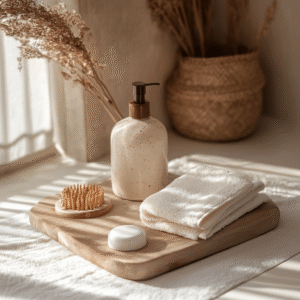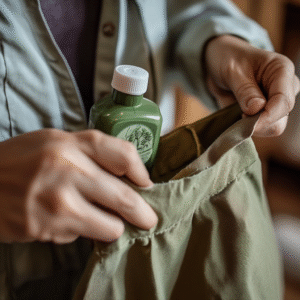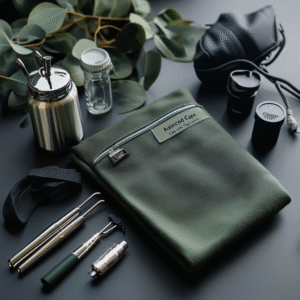Introduction
Every investment piece in your wardrobe—from a silk blouse to a tailored wool coat—deserves meticulous attention. How to Care for Designer Garments goes beyond gentle washing; it’s about preserving craftsmanship, maintaining fit, and extending the life of each creation. In this comprehensive guide, you’ll discover fabric-specific handling, smart storage strategies, precise cleaning techniques, minor repair skills, and sustainable care options. By mastering How to Care for Designer Garments, you’ll ensure your luxury pieces remain vibrant, perfectly fitted, and beloved for years to come.
Understanding Fabric Types and Their Unique Needs
Natural Fibers: Silk, Wool, Cotton
Silk’s delicate sheen and pliability require extra care. Always hand-wash silk in cool water with a silk-specific detergent or choose a specialist dry cleaner. Never wring; instead, roll in a towel to absorb moisture and lay flat to air-dry away from direct sunlight. Wool fibers—especially cashmere and merino—benefit from a gentle wool shampoo. Submerge briefly, rinse thoroughly, then reshape while damp. Avoid hanging damp wool to prevent stretching. For designer cotton pieces like premium shirting, use a gentle machine cycle in cold water and remove promptly to minimize wrinkles and preserve fabric integrity.
Synthetic Materials: Polyester, Nylon, Blends
Many designer blends combine natural and synthetic fibers for structure and resiliency. Polyester and nylon are machine-friendly but still deserve gentle treatment: turn garments inside-out, place in a mesh laundry bag, and wash on a delicate cycle with mild detergent. Use a low-spin setting to reduce stress on seams. To maintain elasticity, air-dry or tumble on low with dryer balls to restore loft and prevent clumping. Always consult the care label for temperature and cycle recommendations—this is crucial in How to Care for Designer Garments, as ignoring labels can lead to irreversible damage.
Luxury Fabrics: Leather, Suede, Cashmere, Lace
Leather and suede demand specialized attention. After each wear, wipe leather with a damp cloth; for suede, brush gently with a suede-specific brush. Condition leather every 3–6 months with a pH-balanced cream, applying sparingly in circular motions and buffing to a soft sheen. Suede benefits from a silicone-free protector spray. Cashmere should be hand-washed in lukewarm water with wool detergent, pressed gently to remove water, and dried flat on a towel to retain its shape. Lace, often used in designer eveningwear, must be hand-washed or spot-cleaned: use a delicate detergent, rinse thoroughly, and air-dry flat, avoiding any pull on ornate trim. Mastering these distinctions is the cornerstone of How to Care for Designer Garments, preserving both beauty and structure.

Storage and Organization Best Practices
Hanging vs. Folding: When to Choose Each
Proper storage begins with deciding whether to hang or fold. Structured garments—blazers, coats, and tailored trousers—should be hung on broad, padded hangers to support shoulder seams and maintain silhouette. Delicate knits, silk blouses, and cashmere sweaters are best folded along seams and stored flat; hanging these can cause shoulder bumps and stretching. Use the “file folding” method in drawers to see each piece at a glance and prevent over-stacking. Incorporating these habits is a critical step in How to Care for Designer Garments, ensuring your week’s rotation remains pristine.
Pest Prevention: Cedar, Mothballs, and Alternatives
Moths and fabric pests can devastate designer wardrobes. Line closets with cedar panels or hang cedar blocks between garments; cedar naturally repels insects and absorbs moisture. For a modern, chemical-free approach, sachets of lavender or rosemary work as gentle deterrents. Avoid traditional mothballs, as their odorous vapors can cling to fabrics. Instead, opt for breathable garment bags or acid-free storage boxes with integrated pest-repelling liners. These measures protect both natural and luxury fibers, reinforcing your strategy for How to Care for Designer Garments without introducing harsh chemicals.
Seasonal Rotation and Climate Control
Off-season garments deserve safe storage. Vacuum-seal bags reduce space but risk crushing delicate fibers; breathable canvas garment bags paired with cedar additives offer a better balance. Store in a cool, dark, dry area—avoid attics and basements prone to extreme temperatures. Use a closet dehumidifier in humid climates to prevent mold growth. Every three months, inspect stored items for discoloration or pests. A proactive rotation schedule secures the long-term health of your designer treasures, embodying the principles of How to Care for Designer Garments.
Cleaning Methods and Schedules
Dry Cleaning: Choosing Eco-Friendly Services
Dry cleaning is indispensable for structured suits, embellished gowns, and intricate outerwear. However, frequent visits can deplete natural oils in fibers. Limit dry cleaning to twice per year or when soiling is evident. Seek out green dry cleaners that use hydrocarbon or liquid CO₂ solvents instead of perchloroethylene. Ask technicians about their garment handling procedures—minimal handling reduces stress on seams and embellishments. This eco-conscious angle enhances How to Care for Designer Garments, safeguarding both your pieces and the planet.
Hand Washing vs. Machine Washing
Hand washing remains the gold standard for ultra-delicates—lace, beading, cashmere. Use lukewarm water, specialized detergents, and gentle swirls. Fully rinse to remove residue. For sturdier synthetics and cotton blends, choose a front-loading machine on “hand wash” mode, inside a mesh bag. Always use cold water and mild detergents without optical brighteners. Reshape garment immediately after the cycle and lay flat to dry. Proper washing routines are integral to How to Care for Designer Garments, preventing shrinkage and preserving original finish.
Stain Removal: Professional vs. DIY Solutions
Speed is crucial: address stains before they set.
Oil-based stains: blot excess, apply cornstarch for 30 minutes to absorb, then brush off and launder.
Red wine: immediately blot, pour club soda onto the stain, then rinse in cold water.
Ink: dab carefully with a cotton swab dipped in isopropyl alcohol—test on hidden area first.
For complex fabrics or embellishments, professional stain removal is safest. Mastering these techniques supports How to Care for Designer Garments, ensuring you tackle mishaps without compromising luxury fibers.
Maintenance and Minor Repairs
Seam Reinforcement and Loose Threads
Even a single loose thread can lead to unraveling. Keep small scissors and a fine sewing kit on hand. Trim stray threads carefully, then reinforce seams with tiny whip stitches using matching thread. Focus on high-stress areas—underarms and side seams—to prolong garment life. These micro-repairs are essential in How to Care for Designer Garments, preserving both structure and aesthetic.
Button and Zipper Replacement
Designer buttons are often bespoke—store any spares provided with your purchase in a labeled pouch. When replacing, match thread color and stitch pattern exactly. Zipper jams can be freed by rubbing graphite pencil along the teeth; for major zipper failures, seek a tailor with experience in luxury garments. Seamless hardware repair is a hallmark of How to Care for Designer Garments, keeping closures both functional and beautiful.
Fabric Pilling and Snag Management
Pilling occurs when fibers rub against each other. Use a battery-powered fabric shaver or a fine sweater comb, running gently over the surface. For snag removal on knits and lace, thread the snag back through to the inside using a snag hook. Regular maintenance like this ensures your pieces look as pristine as the day you bought them, a key component of How to Care for Designer Garments.
Protecting Against Wear and Tear
Rotating Garments and Usage Patterns
Over-wear accelerates stress on seams and fibers. Rotate similar items—blazers, sweaters, coats—allowing each to rest 48 hours between wears. This simple habit distributes friction evenly, reducing overall wear and upholding the longevity standards of How to Care for Designer Garments.
UV and Moisture Protection
Sunlight fades dyes; humidity breeds mold. Store garments away from windows and avoid hanging damp items. In climates with high humidity, use silica gel packets or a closet dehumidifier to preserve fabric integrity. Such environmental controls are crucial for How to Care for Designer Garments, ensuring color vibrancy and preventing structural damage.
Fabric Protectors and Waterproofing
Apply eco-friendly, silicone-free fabric protectors to wool and cotton blends to repel stains. For leather and suede, use appropriate protectant sprays tested on hidden areas. Always follow manufacturer guidelines. Protective barriers shield against accidental spills and rain, reinforcing your How to Care for Designer Garments routine.

Transporting and Traveling with Designer Pieces
Garment Bags and Protective Covers
Invest in high-quality, breathable garment bags—avoid plastic, which traps moisture. Pack each piece on a padded hanger, ensuring shoulders retain shape. Use clip extenders for skirts and trousers to distribute weight evenly.
Packing Techniques for Crease Prevention
Fold along natural seams and insert acid-free tissue to cushion creases. Roll scarves and tuck inside suit pockets. For structured jackets, pack between layers of soft items (like cashmere sweaters) to absorb impact. These travel tactics are indispensable parts of How to Care for Designer Garments, keeping your pieces pristine wherever you go.
Sustainable and Eco-Friendly Care Options
Biodegradable Detergents and Solvents
Opt for plant-based, biodegradable detergents free of optical brighteners. Modern formulas clean effectively while safeguarding delicate fibers and reducing environmental impact. Integrating green products is a forward-thinking step in How to Care for Designer Garments.
Energy-Efficient Appliances and Drying
Wash full loads on cold cycles and line-dry whenever possible. Front-load machines typically use less water; choose ENERGY STAR® certified appliances to minimize your carbon footprint.
Upcycling and Donating
When a garment no longer fits your style, consider upcycling—transform an evening dress into a skirt or repurpose a blouse into a scarf. Donating to high-end resale platforms, like How to Shop Luxury Consignment Like a Pro, extends the garment’s lifecycle. These sustainable actions align perfectly with How to Care for Designer Garments, honoring both craftsmanship and our planet.
Advanced Tips for Longevity
Steam Cleaning vs. Ironing
Steam gently removes wrinkles without direct heat contact—ideal for silk and wool. Hang garments in a steamy bathroom or use a handheld steamer at a safe distance. Reserve ironing for sturdy cotton or linen, always with a press cloth. For a visual demonstration, watch this YouTube tutorial: How to Steam Your Garments Safely. Mastery of these methods elevates How to Care for Designer Garments, preventing scorch marks and shine.
Pulse Inspections and Micro-Repairs
Monthly, inspect high-friction zones—collars, cuffs, underarms—for thinning or pilling. Address issues immediately with a fabric shaver or gentle hand-sewn reinforcement. Early intervention is key in How to Care for Designer Garments, keeping damage minimal and repairs simple.
Color Revitalization and Fabric Refresh
Hues may dim over time. Use color-enhancing laundry additives formulated for specific fibers, following instructions precisely and testing on hidden seams. For whites, oxygen-based whiteners restore brightness without harsh chemicals. These techniques complete your advanced toolkit for How to Care for Designer Garments, ensuring every piece looks runway-fresh.

If you’re eager to take your garment‐care expertise to the next level, enroll in the Luxury Fabric Preservation Masterclass—a step-by-step program teaching professional techniques for cleaning, restoring, and protecting high-end fabrics. Access the course here and turn every designer piece into a lasting wardrobe legacy.
Expert Insights and Resources
Insights from Top Designers and Stylists
Leading designers often share care tips in fashion week interviews. For example, Stella McCartney advocates gentle hand-washing of her silk pieces, while Tom Ford emphasizes professional conditioning for leather jackets. These expert perspectives reinforce your How to Care for Designer Garments strategy with industry authority.
Celebrity Wardrobe Care Secrets
Celebrities like Emma Watson and Harry Styles employ personal stylists who schedule biannual garment audits and use in-house steaming services. Learn more about these insider methods in our internal guide: Celebrity Wardrobe Maintenance.
Industry Standards and Guidelines
For the latest in fabric care science, consult resources like the Textile Care Labeling Act and the American Cleaning Institute. The CFDA also publishes seasonal care recommendations to maintain couture-level quality. Integrating these references elevates your approach to How to Care for Designer Garments, aligning with professional standards.
Conclusion
Key Takeaways
How to Care for Designer Garments is a multifaceted process: fabric knowledge, storage strategy, cleaning precision, minor repairs, and sustainability all play vital roles.
Rotate pieces, protect against UV and moisture, and apply eco-friendly protectors to maintain peak condition.
Advanced techniques like steaming, pulse inspections, and color revitalization complete the preservation toolkit.
Actionable Next Steps
Audit your wardrobe and identify care gaps by fabric type.
Implement a quarterly care routine: condition, de-pill, and inspect.
Invest in quality storage: cedar hangers, acid-free tissue, breathable bags.
Adopt one sustainable habit: biodegradable detergent, line-drying, or upcycling.
Final Thought
Designer garments are wearable art. By mastering How to Care for Designer Garments, you honor the craftsmanship behind each piece, preserve its story, and ensure every item remains a cherished centerpiece in your wardrobe for years to come.
Frequently Asked Questions (FAQ)
How often should I dry-clean a designer suit?
Ideal dry-cleaning frequency depends on wear and fabric, but as a rule of thumb, limit professional cleaning to no more than twice per year unless stains or odors warrant it. Over-cleaning strips natural oils—critical for maintaining both drape and color vibrancy. In between visits, air out your suit on a padded hanger after each wear, and spot-treat minor marks at home using a damp cloth and fabric-safe stain remover.
What’s the best way to store silk scarves?
Silk is prone to yellowing and snagging. To preserve them:
Fold loosely along original seams, avoiding tight creases.
Wrap in acid-free tissue to protect dyes and texture.
Store flat in a drawer or box, away from direct light and strong odors.
Rotate your collection seasonally, giving each scarf a chance to “rest,” which prevents permanent folding lines.
Can I use a home steamer on cashmere?
Yes—steam can refresh cashmere’s loft and remove wrinkles without direct heat contact. Follow these steps:
Hang the garment on a sturdy hanger.
Steam from 6–8 inches away, moving the head continuously to avoid moisture buildup.
Gently reshape the fabric with your hands while it’s slightly damp.
Lay flat to finish drying, preventing stretching or distortion of the fibers.
How do I remove pilling from wool coats?
Pilling occurs when fibers rub together. To safely remove pills:
Use a battery-powered fabric shaver or fine sweater comb; work in gentle, circular motions.
Prevent future pilling by turning your coat inside out before brushing or wearing under tight layers.
Inspect seams and high-friction areas monthly so you can address pilling before it worsens.
Are biodegradable detergents effective for stain removal?
Modern biodegradable detergents are formulated to tackle everyday stains while minimizing environmental impact. For best results:
Pre-treat oil-based stains with a small amount of eco-friendly degreaser or dish soap.
Wash on a cold, gentle cycle, which preserves fibers and colors.
Avoid optical brighteners that can degrade delicate fabrics over time.
When used correctly, these detergents align perfectly with How to Care for Designer Garments to Make Them Last, supporting both garment longevity and sustainable practices.